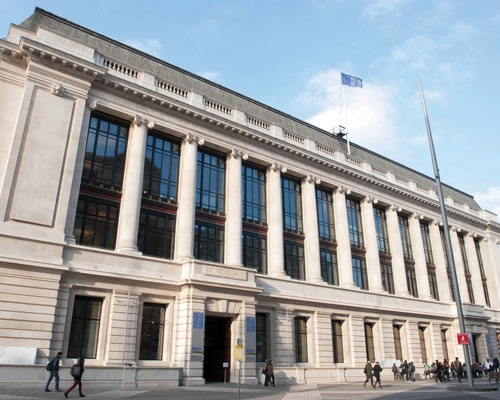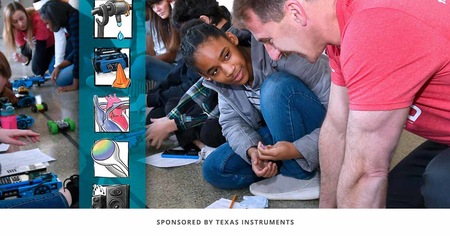When people ask, "What was one of your biggest learnings from your trip?" I like to joke and say, "When a tall thin man asks you if you are OK with stairs, make sure to clarify what he means before saying 'Yes.'"
The London Science Museum has seven floors. After a brief introduction, Dr. Webster led our group up the stairs to the third floor and across the massive museum (did he really say a quarter mile?) to show us some of the learning spaces that target children and youth through use of real science and scientists. We saw the Launchpad, an interactive gallery geared toward ages 8 through 14, packed with hands-on exhibits illustrating different physical science concepts. The gallery is staffed by Explainers, young people available to demonstrate how exhibits work, conduct live experiments, and perform shows. We also visited Engineer Your Future, an exhibition aimed at 11- to 15-year-olds, designed to inspire and engage youth with engineering, raising awareness of engineering careers. The exhibition explores engineering through challenging interactive games that bring to life the skills engineers use every day.
From there we hit a few more flights of stairs, walked through several more exhibits, and then stopped for Q&A, where Webster described the Science Museum Group's (SMG) learning strategy in response to concerns around the lack of uptake in science, technology, engineering, and math (STEM) subjects in education and careers. He shared that the museum has embraced its role in increasing science literacy by sharing and delivering learning initiatives that address these challenges.
"Our work at the Science Museum with children and young people is focused around schools and families. We have lots of activities and programs within the museum that you would expect, but we also have a couple of academic research programmes underway as well that are seeking to find evidence and best practice in creating what we refer to as 'science capital,'" Webster said. "There is a massive hole developing in the UK workforce of young STEM professionals, and this is really scaring the government at the moment. It has already started, but is only getting worse—and many STEM companies are saying that they cannot recruit within the UK; there just aren't the skills and numbers to meet demand. Clearly we, as the Science Museum, having a role to play in inspiring the next generation of scientists and engineers and these research projects are trying to understand what that role is exactly and how we can maximise our input into the lives of young people. It is still quite early on, but we already know that we have a role to play in exposing young people to real scientists and also developing a familial interest and subsequent support of STEM careers options."
Webster described a partnership with King's College London and BP, which is working to develop an evidence base for understanding how to build science capital amongst 11- to 16-year-olds. Through outside-the-classroom and informal science learning approaches used by museums and science centers, the project aims to help more young people find science engaging and will provide opportunities for their future aspirations and ambitions. The focus is on developing young people's science capital and on understanding the relationship between school, home, and museums to best support this.
In all seriousness, what was one of my biggest learnings from #NAAILE15? The London Science Museum visit highlighted how the interconnected content areas of science, technology, engineering, and math give us the building blocks for understanding and improving systems that power economies and advance society, and how learning spaces afterschool, on weekends, and during the summer are important—not just in the U.S., but worldwide.
The second annual NAA International Learning Exchange in Dublin and Belfast, Ireland, is scheduled for June 27 – July 1, 2016.
The Science Museum Group is a family of museums that includes the London Science Museum.
Written by Heidi Ham, Vice President of Programs and Strategy for the National AfterSchool Association.
Photo courtesy of London Science Museum.




